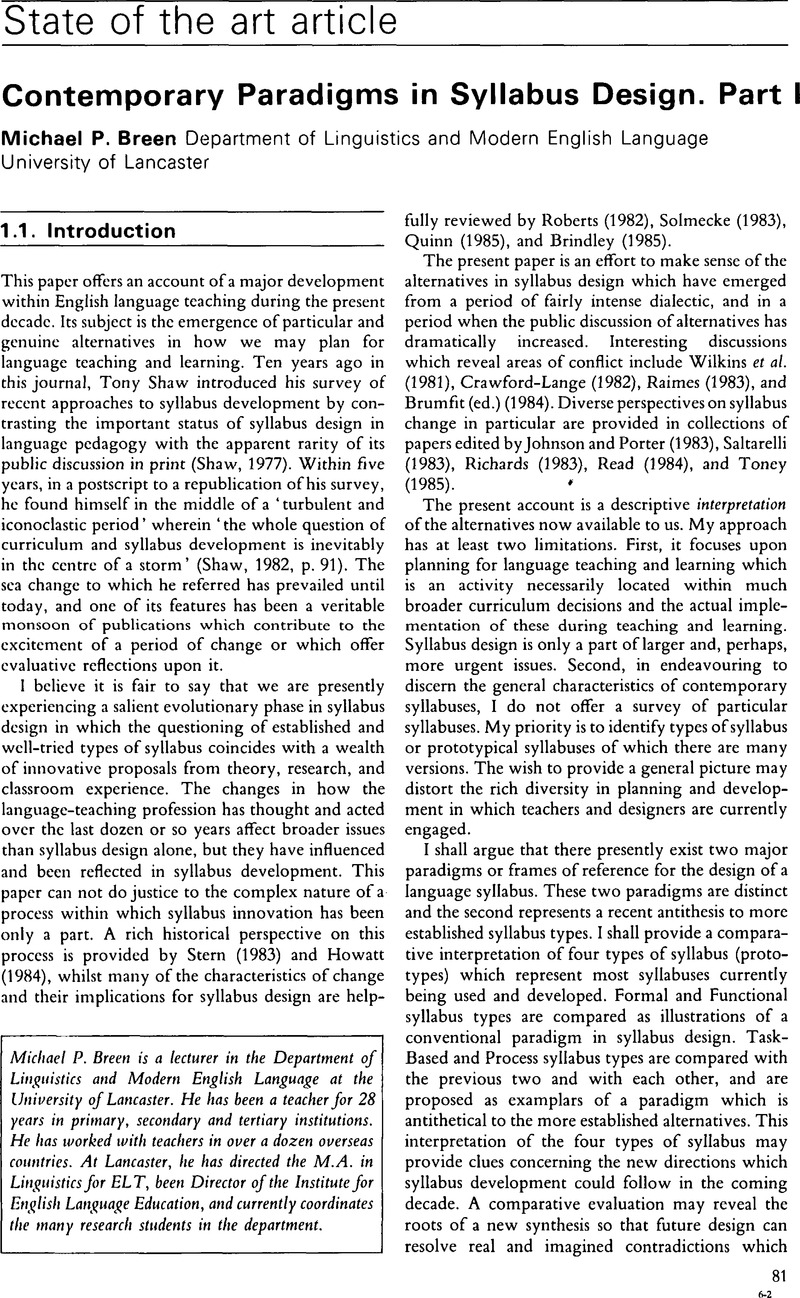Crossref Citations
This article has been cited by the following publications. This list is generated based on data provided by Crossref.
Brumfit, Christopher
and
Mitchell, Rosamond
1988.
Research in applied linguistics relevant to language teaching: 1987.
Language Teaching,
Vol. 21,
Issue. 3,
p.
141.
Rado, Marta
and
Reynolds, Chris
1989.
Applied linguistics as a framework for selection in syllabus design and assessment.
Australian Review of Applied Linguistics,
Vol. 12,
Issue. 1,
p.
138.
Foley, Joseph A.
1990.
Task‐based approaches to language learning from the learner's point of view.
Language and Education,
Vol. 4,
Issue. 2,
p.
81.
1991.
Languages in School and Society.
p.
129.
Foley, Joseph
1991.
Vygotsky, bernstein and halliday: Towards a unified theory of L1 and L2 learning.
Language, Culture and Curriculum,
Vol. 4,
Issue. 1,
p.
17.
Flowerdew, John
1993.
Concordancing as a tool in course design.
System,
Vol. 21,
Issue. 2,
p.
231.
Edelenbos, Peter
and
Suhre, Cor J.M.
1994.
A comparison of courses for english in primary education.
Studies in Educational Evaluation,
Vol. 20,
Issue. 4,
p.
513.
Fulcher, Glenn
1995.
Variable competence in second language acquisition: A problem for research methodology?.
System,
Vol. 23,
Issue. 1,
p.
25.
Mellow, J. Dean
Reeder, Kenneth
and
Forster, Elizabeth
1996.
Using Time-Series Research Designs to Investigate the Effects of Instruction on SLA.
Studies in Second Language Acquisition,
Vol. 18,
Issue. 3,
p.
325.
Brett, Paul
1996.
USING MULTIMEDIA: AN INVESTIGATION OF LEARNERS’ ATTITUDES.
Computer Assisted Language Learning,
Vol. 9,
Issue. 2-3,
p.
191.
Trim, J. L. M.
1998.
European perspectives on modern language learning.
Language Teaching,
Vol. 31,
Issue. 3,
p.
136.
He, An E
1998.
The Chinese Experience with Implementing the College English Syllabus.
International Journal of Educational Reform,
Vol. 7,
Issue. 4,
p.
319.
Rijlaarsdam, Gert
and
Couzijn, Michel
2000.
New Learning.
p.
157.
Xavier, Rosely Perez
2004.
O desenvolvimento da compreensão oral e em leitura em um programa temático baseado em tarefas.
Revista Brasileira de Linguística Aplicada,
Vol. 4,
Issue. 1,
p.
117.
Graves, Kathleen
2008.
The language curriculum: A social contextual perspective.
Language Teaching,
Vol. 41,
Issue. 2,
p.
147.
Moonsub Han
and
Kyung-hye Kim
2008.
Teaching an ESP Writing Course Collaboratively through a Web Community.
English Language Teaching,
Vol. 20,
Issue. 4,
p.
29.
Wette, Rosemary
2009.
Making the instructional curriculum as an interactive, contextualized process: case studies of seven ESOL teachers.
Language Teaching Research,
Vol. 13,
Issue. 4,
p.
337.
Woods, A.
Luke, A.
and
Weir, K.
2010.
International Encyclopedia of Education.
p.
362.
Wall, Dianne
and
Horák, Tania
2011.
THE IMPACT OF CHANGES IN THE TOEFL® EXAM ON TEACHING IN A SAMPLE OF COUNTRIES IN EUROPE: PHASE 3, THE ROLE OF THE COURSEBOOK PHASE 4, DESCRIBING CHANGE.
ETS Research Report Series,
Vol. 2011,
Issue. 2,
Alexander, Olwyn
2012.
Exploring teacher beliefs in teaching EAP at low proficiency levels.
Journal of English for Academic Purposes,
Vol. 11,
Issue. 2,
p.
99.



